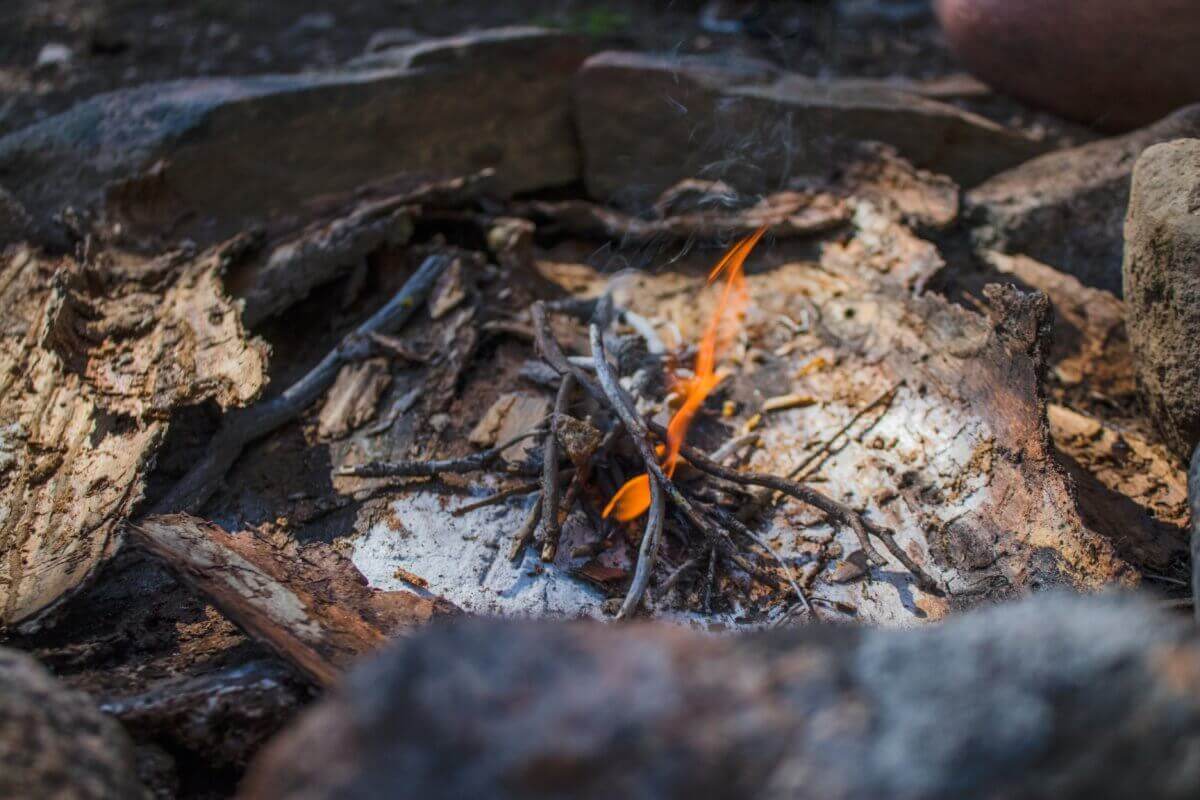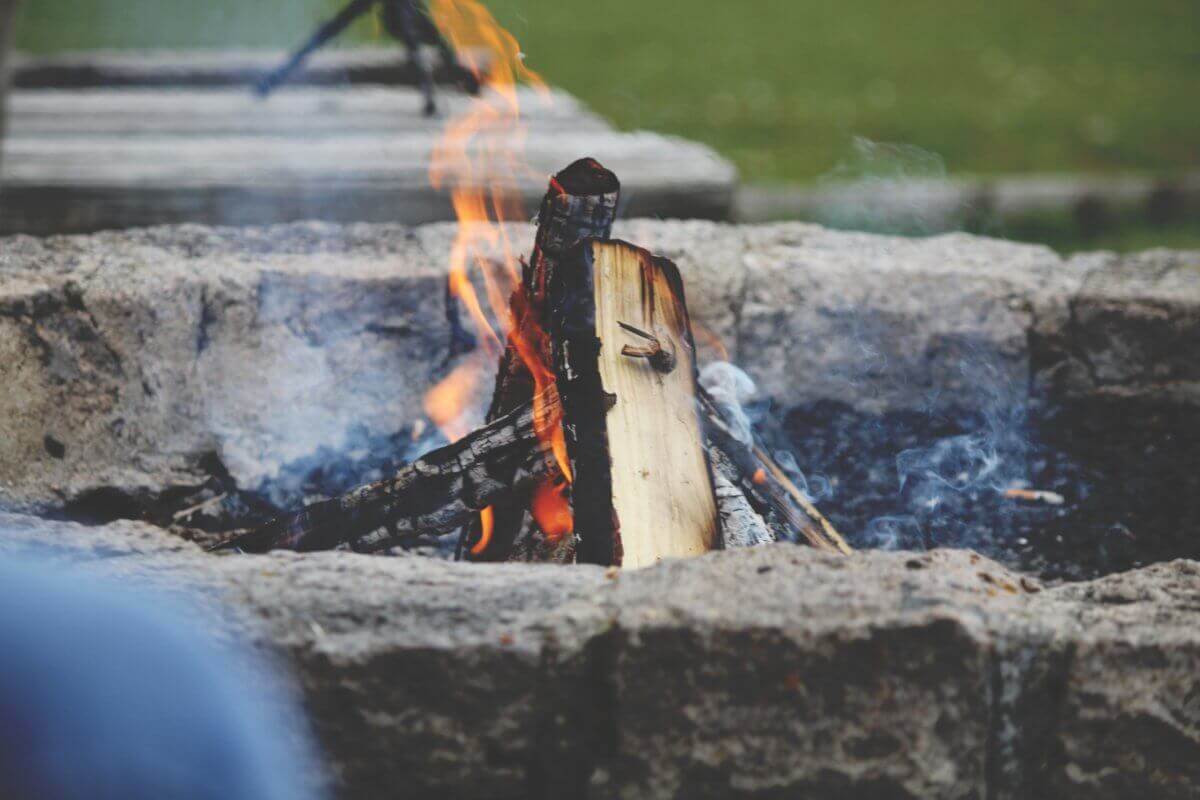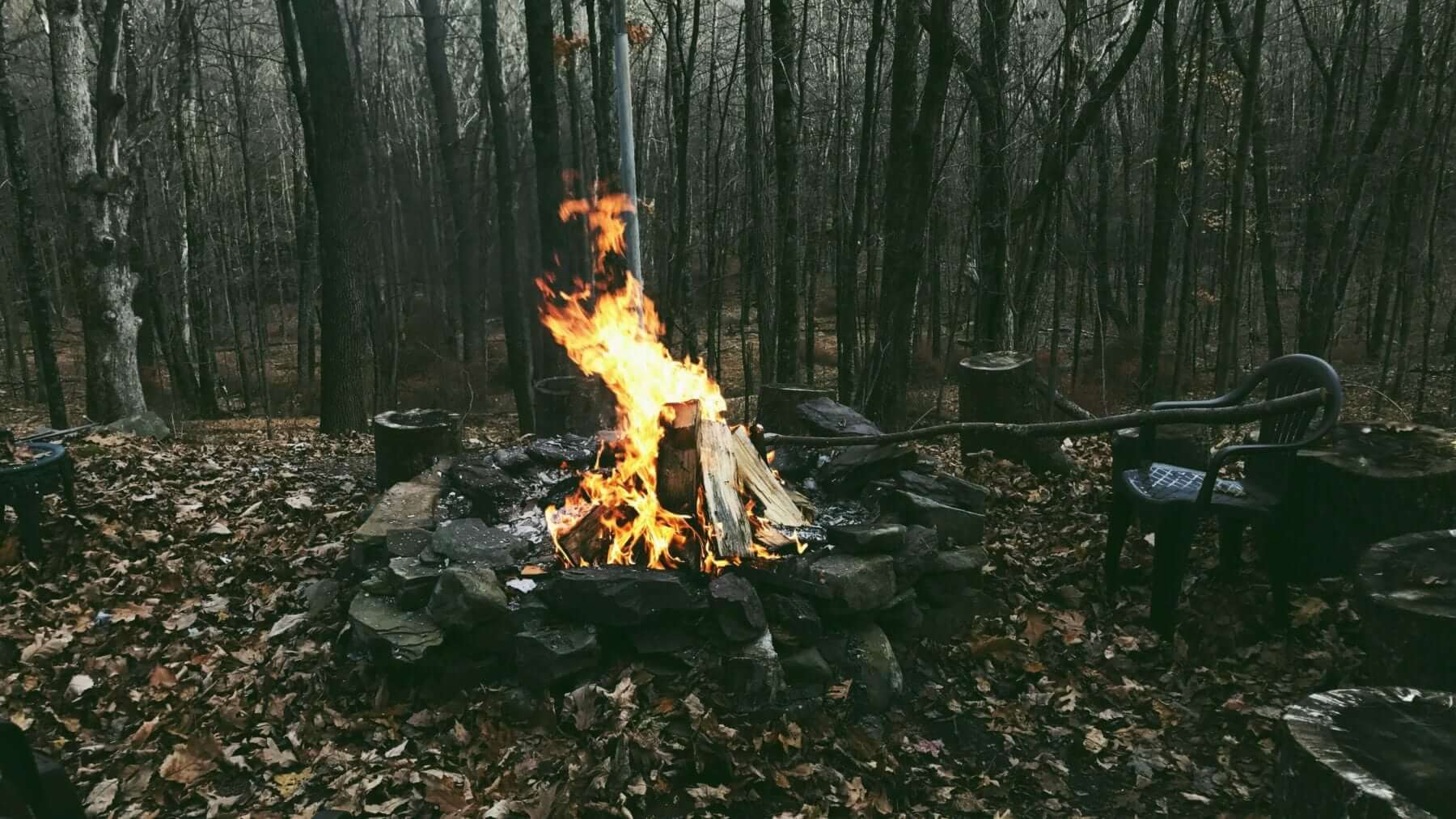Beginning campers often struggle to start fires, but with time and practice, most become quite proficient at the task. However, that doesn’t mean you’ll always find it easy to get a fire started. From time to time, even the most skilled and experienced campers will struggle when trying to start a fire.
Often, these struggles are due to environmental factors. This means that if you camp often and long enough, you’ll probably experience such difficulties and spend a night shivering in the cold. But fortunately, most of these difficulties occur because of one of three common issues. We’ll explain these problems below, as well as potential solutions that may help you make a warm and roaring fire.

Wet wood is perhaps the most common fire-starting challenge campers face, and it is always a possibility for those who routinely camp in the Pacific Northwest, Southeastern United States or other rainy locations.
Wood will not burn when it is wet. In fact, wood has to be heated enough to dry out completely before it will burn. This doesn’t mean that a given log must be completely dry before it will burn, but the actual wood burning at any point in time has already lost all of its water. Accordingly, it can be very frustrating to try to start a fire immediately following the rainy weather.
There’s no simple way to sidestep the problem of wet wood. You must simply find dry wood. However, there are a few tips and tricks that will help you accomplish this.

High winds are often thought to increase the danger of campfires (and they do); but ironically, they can also make it very difficult to start one. Many campers have struck one match after another in an effort to light their tinder, only to have the wind extinguish the match flame before the tinder would ignite.
The easiest way to start a fire in high winds is to simply create or improvise a structure that blocks the wind. However, there are a number of different ways to do this, including:
Many campers manage to get their tinder lit, and they may even get the kindling wood to ignite. However, they’ll have great difficulty getting the fuel logs to light. Eventually, such campers end up looking at a pile of ashes that used to be kindling and a stack of fuelwood, with a lightly charred exterior.
Assuming that you aren’t battling strong winds or being forced to use damp wood, the most common reason campers have trouble igniting their fuelwood is due to design problems. Specifically, it usually means that the fire is not getting enough oxygen. You can help correct this problem by:
Even the most experienced campers will eventually find themselves having difficulty starting a fire. The question isn’t “if” but “when.” But if you familiarize yourself with these three problems and their associated solutions, you’ll likely figure out how to overcome these challenges when they present themselves.
Often, these struggles are due to environmental factors. This means that if you camp often and long enough, you’ll probably experience such difficulties and spend a night shivering in the cold. But fortunately, most of these difficulties occur because of one of three common issues. We’ll explain these problems below, as well as potential solutions that may help you make a warm and roaring fire.

Problem #1: Wet Wood
Wet wood is perhaps the most common fire-starting challenge campers face, and it is always a possibility for those who routinely camp in the Pacific Northwest, Southeastern United States or other rainy locations.
Wood will not burn when it is wet. In fact, wood has to be heated enough to dry out completely before it will burn. This doesn’t mean that a given log must be completely dry before it will burn, but the actual wood burning at any point in time has already lost all of its water. Accordingly, it can be very frustrating to try to start a fire immediately following the rainy weather.
Solution: Find Dry Wood
There’s no simple way to sidestep the problem of wet wood. You must simply find dry wood. However, there are a few tips and tricks that will help you accomplish this.
- Look for broken branches that are suspended high in the trees. Water will not only drain away from these branches more quickly and completely than it will drain from a log laying on the ground, these branches are also exposed to more wind, which helps them dry even more quickly. Obviously, you must limit your search to those branches you can reach, but you should be able to find enough wood to start a fire with sufficient effort.
- Harvest dry wood from inside large logs. While large logs can become drenched through to their cores, most will remain quite dry on the inside. Using a large knife or your camp ax, strip away damp portions of the log until only dry wood remains. You can also use this technique to create your own tinder. Just shred the dry wood harvested from the log’s interior into very fine fibers and they’ll make excellent tinder.
- Look for logs and branches lying in exposed, sunny locations. Forests are often damp places, even several days or weeks removed from rainy weather. But sunny, exposed locations are typically quite dry – especially if they are also buffeted by strong winds.
- Look for branches under overhangs and other sheltered locations. Lots of natural features create sheltered spots, which can remain surprisingly dry. Cliff bases are often excellent locations to search, as the vertical walls will usually protect small areas at the bottom of the wall from the rain. You’d be surprised how dry some of these places – and the branches found in them – can be.

Problem #2: High Winds
High winds are often thought to increase the danger of campfires (and they do); but ironically, they can also make it very difficult to start one. Many campers have struck one match after another in an effort to light their tinder, only to have the wind extinguish the match flame before the tinder would ignite.
Solution: Create a Wind Screen
The easiest way to start a fire in high winds is to simply create or improvise a structure that blocks the wind. However, there are a number of different ways to do this, including:
- Stack additional rocks around the fire circle. You should only build a fire in a circle of stones anyway, so just take the time to find some more rocks and stack them on top of the existing circle. In extremely windy conditions, you may need to stack the stones high around the entire circle, but moderate winds will only require you to stack them on the side from which the winds are blowing.
- Use your body to shield the match. Chances are, you’ll intuitively try to use your body to block the wind, but it bears mentioning anyway. You may have even better luck by stretching the side of your jacket out sideways.
- Start the fire in a sheltered location. In the windiest conditions, you may not be able to use rocks or your body to adequately shield the match. In such circumstances, you may need to seek out a sheltered location, such as a cliff base or cave to start the fire. You can then transfer coals or burning logs to the desired location.
- Build the fire in a subterranean pit. By digging down into the soil and then partially covering the pit with branches, you can create an enclosed space to start your fire. You’ll need to provide the fire with more access to oxygen once the fire is burning, but this shouldn’t be a problem – just remove the covering branches as necessary.
Problem #3: Kindling Lights, but Fuel Wood Does Not
Many campers manage to get their tinder lit, and they may even get the kindling wood to ignite. However, they’ll have great difficulty getting the fuel logs to light. Eventually, such campers end up looking at a pile of ashes that used to be kindling and a stack of fuelwood, with a lightly charred exterior.
Solution: Re-Construct the Wood Pile
Assuming that you aren’t battling strong winds or being forced to use damp wood, the most common reason campers have trouble igniting their fuelwood is due to design problems. Specifically, it usually means that the fire is not getting enough oxygen. You can help correct this problem by:
- Use a log-cabin, rather than pyramidal design. Although the traditional pyramidal design can be very effective, it is often easy for beginners to place the sticks too closely to each other, which chokes off the oxygen and prevents the fire from growing. But, a log-cabin-style wood pile will allow plenty of oxygen to pass through the wood.
- Stack the wood so that the prevailing winds blow through the center of the pile. You can accomplish this by building your log-cabin on top of two large, parallel logs. Make sure that you light the fire from the side the wind is blowing. The wind will not only carry oxygen through the woodpile, but it will carry heat through the wood too.
- Dig a trench through the center of the wood pile. By creating a small tunnel, you can help flood the woodpile with oxygen. It will also make it easier for you to blow air into the coals, if necessary.

Even the most experienced campers will eventually find themselves having difficulty starting a fire. The question isn’t “if” but “when.” But if you familiarize yourself with these three problems and their associated solutions, you’ll likely figure out how to overcome these challenges when they present themselves.

